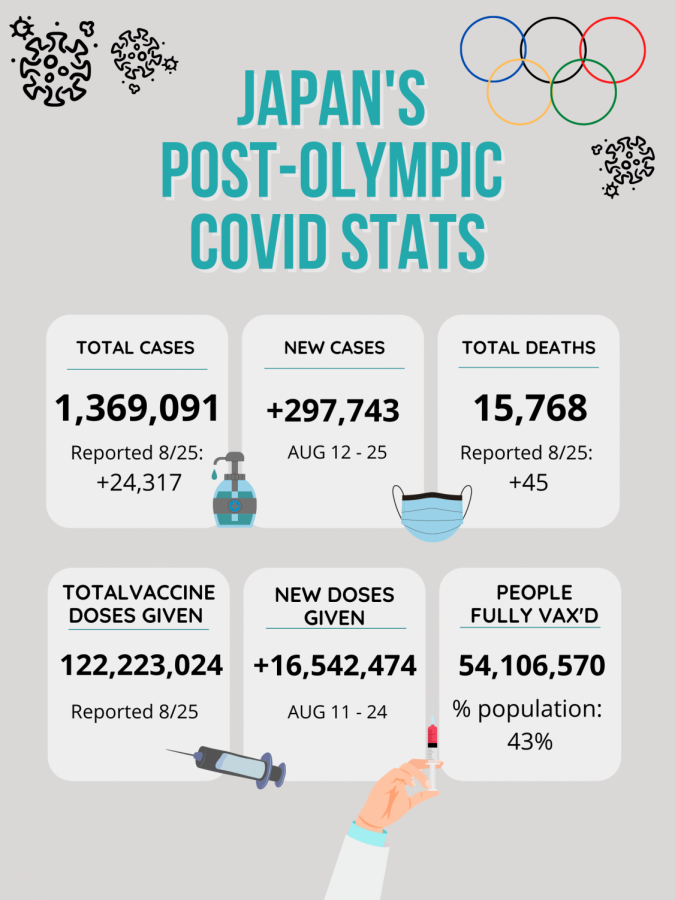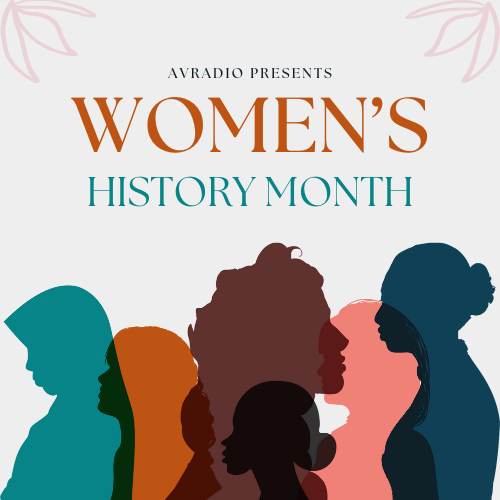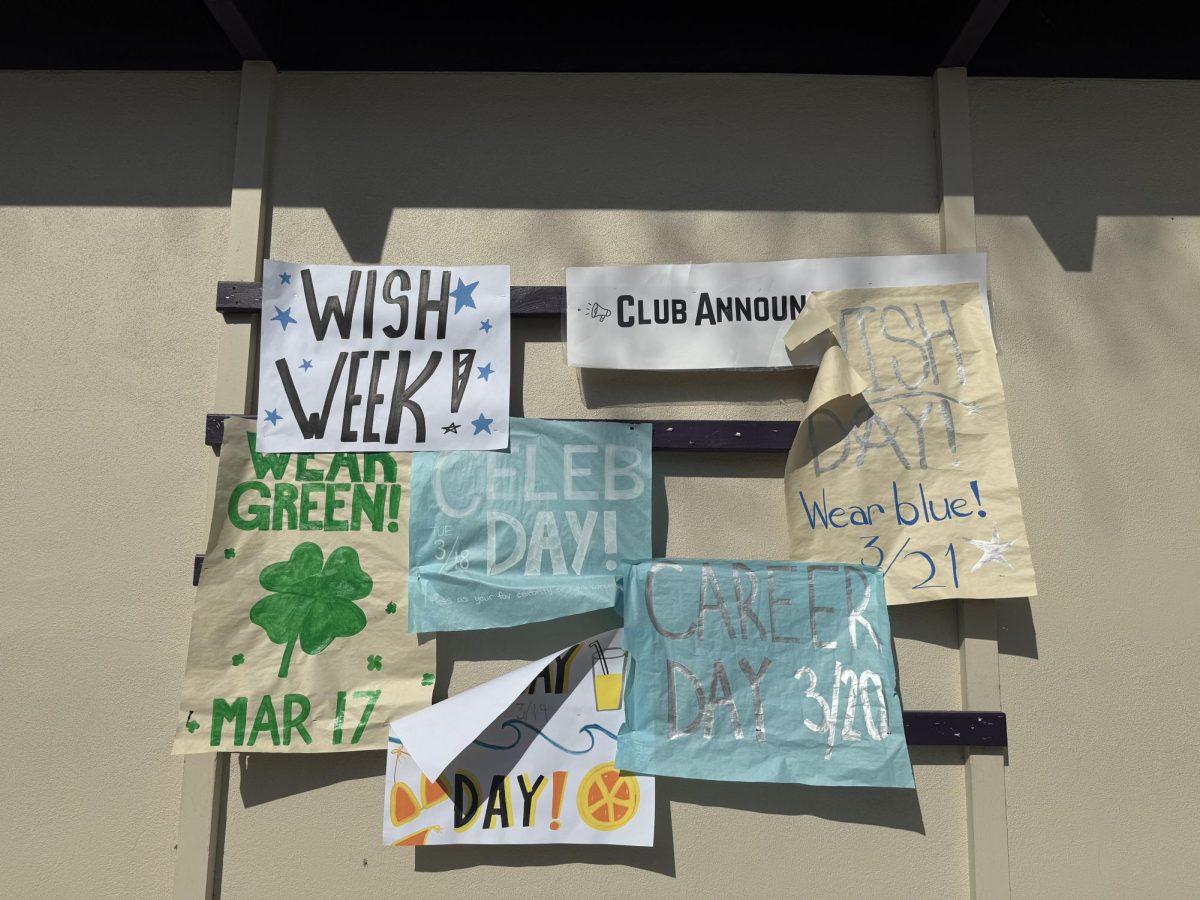Japan goes into a state of emergency after hosting Olympics
Japan’s Covid-19 statistics continue to rise in all sectors: total cases, new cases since August 12th, total deaths, total vaccine doses given, new doses given since August 11th, and the number of people fully vaccinated.
August 26, 2021
After the long delayed Tokyo Olympics ended on August 8th, Japan has begun to see a spike in COVID-19 cases.
“Swimming is a sport where you don’t really have to interact with other people too closely. It’s an individual sport, so I feel pretty safe, especially with the precautions that my team takes.” said Sarah Baer (‘22), who is on Amador Valley’s swim team.
The Olympic committee made sure many precautions for participants and staff were taken during the 2021 Summer Olympics to prevent a rise, such as daily saliva tests, staying in the Olympic village, and operating daily in a “bubble-esque”, or minimal touch, environment. But, despite all the precautions that were taken during the event, Japan is now in another state of emergency, anticipating their fourth COVID wave. Viewers who followed the Olympic events think that they were handled to the best of their ability given their circumstances.
“The Olympic village was definitely handled well,” said Jack McDowell (‘23), who plays for Amador Valley’s water polo team.
The Japanese government is rushing to get the COVID-19 cases under control, but they are now reaching about 22,500 new cases a day, while death rates remain low due to more people being vaccinated. Citizens, as well as the government, are worried about more cases because of the Paralympics which are happening August 24th to September 5th in Tokyo, Japan.
As for Amador sports teams, they are all taking precautions during practices and competitions, such as limiting the number of people present and mandating masks when not playing, during practices, and during tournaments to prevent another outbreak.
“Before we get in the water, we have to wear masks, and just anytime we are out of the water, we have to be wearing masks. We get our temperatures checked before practice and we stay 6 feet apart as much as possible. We’ve only had a couple of meets, but we have a limited amount of people that can participate. When you’re not swimming, you have to be masked up, 6 feet apart. In some of our earlier meets, we only used every other lane to ensure that timers and swimmers were of a good distance from each other.” said Baer.
Amador Valley has plans to continue all sports, staying precautious throughout the school year until the pandemic has officially passed.






